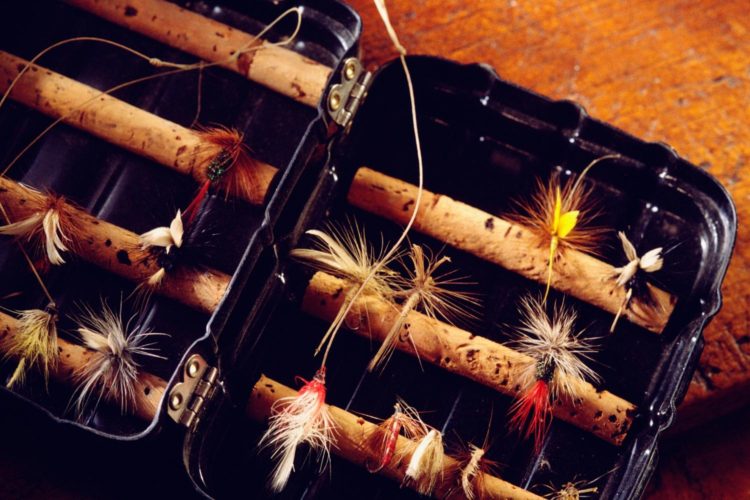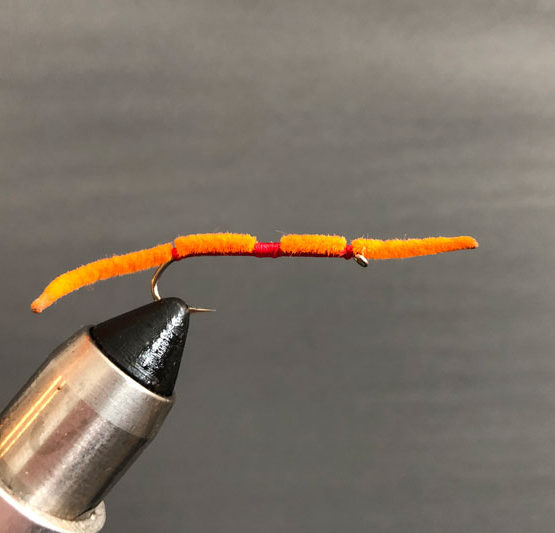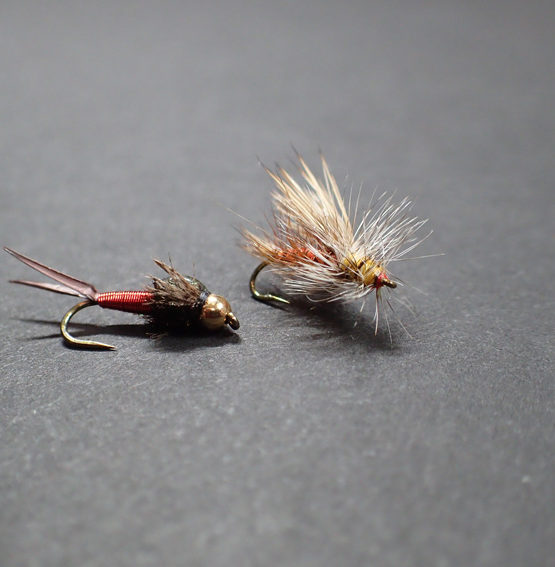The one thing I have learned about dry fly fishing over the years, is that fly presentation is everything. If you can cast your fly so that it lands softly, and manage your line so that it drifts naturally, you are much more likely to end up with a fish on your line. Though, none of that even matters if you can’t keep your dry flies afloat. So, with that in mind, here are 5 tips to keep your dry flies from sinking.
Related Content:
- 25 Best Dry Flies For Colorado Fly Fishing
- What Is An Attractor Fly? (With 10 Examples)
- How To Read A River: 9 Tips To Catch More Trout
- 9 Killer Nymphing Tips For Beginners
- Fly Fishing Gear For Beginners – Here’s What You Need
1. Use Floatant
If you’re new to fly fishing, the concept of floatant might be foreign to you. But no need to worry. Floatant is essentially a liquid wax that coats your fly in order to keep it from absorbing water, and therefore floating on the surface.
Floatant is your best friend when it comes to dry fly fishing, and applying it to your fly should be the first thing you do after you tie one to your line.
The key to floatant is to make sure your fly is dry before you apply it. So, the best time to apply it is before you make your first cast.
However, you should re-apply floatant to your dry flies consistently throughout the day, and for sure after every fish you catch. You’ll find that dry flies tend to get a little water-logged after about a half an hour of casting, and especially after a fish has taken one under water and thrashed around for awhile. When that happens, just dry your fly off as best as possible, and add some more floatant.
Side Note: When you go to put floatant to your dry fly, you should also apply it to the tippet directly above the fly. This small extra step can really make a difference.
2. Manage Your Line Properly
If you are dry fly fishing on a river, you’ll find it is much harder to keep your fly floating. Between the varying currents and back eddies, it is easy to let the water pull your dry fly under the surface. So, one of the best ways to keep your dry fly floating is to manage your line properly. Here are a few tips to help you do just that.
Keep The Right Amount Of Slack
In general, slack is a bad thing when it comes to fly fishing. However, when you are casting a dry fly, if you don’t have any slack in your line, it is nearly impossible to keep your fly from skating, twitching, or sinking.
So, give your fly a little slack; just not so much that you have to strip-in line in order to set a take. The right amount of slack will allow you to mend your line without disrupting your drift, but quickly pull tight on your hook set.
Keep Your Line Upstream
Another good rule-of-thumb is to keep your line upstream from your fly as much as possible. This will keep the line between your rod and the fly from getting caught in faster current and pulling your fly underwater.
However, your most important priority is keeping your fly presentation as pure as possible, so if your line is getting downstream of your fly, but your presentation is still good, don’t mess with it too much.
Try The High-Stick Method
If you are fishing pocket water, and can’t keep your dry fly from sinking, you might just be letting too much line out. So, try to get a little closer to the pocket you are trying to fish, shorten your line, and keep your rod tip high. Often times I will go as far as trying to keep my fly line from touching the water. This will keep your line from getting caught in any rogue currents and sucking your dry fly under.
3. Keep Your Flies Dry
If you want to keep your dry flies floating, it is essential to keep them dry. I mentioned this earlier in regard to applying floatant, but even between coats of floatant it is critical to keep your flies from getting too water-logged.
But how do you do it? Here are a few great ways to keep your dry flies, well… dry.
False Cast
The first method of drying out your flies is the false cast. If you are new to fly fishing, a false cast is just a cast that you don’t let land on the water. It is the iconic back-and-forth image you probably picture when thinking of fly fishing, but it isn’t just for show. False casting is a great way to keep your flies dry. Just don’t get too carried away. It only takes a couple casts to dry out a fly. Beyond that, you are either showing off, or asking for a tangle in your line.
Use An Amadou Patch
If you really want to keep your dry flies dry, you should consider adding an amadou patch to your fly fishing vest or pack. Amadou is a material derived from a fungus that grows on trees, and it is extremely absorbent.
All you have to do is place your fly on the patch, fold it over, and squeeze the moisture out of your fly. The patch will quickly wick away any moisture, and get your fly back to its dry, original condition.
Amadou patches can be a little pricey, but if you do a lot of dry fly fishing, it is well worth the money. I mean, can you really put a price on catching more fish? I didn’t think so.
Use Your Shirt Sleeve
If an amadou patch seems a little too fancy for you, then you can just as easily dry it off with your shirt sleeve. Sure, it might not absorb quite as much moisture, but it works just fine in a pinch (no pun intended).
The only problem with using your shirt sleeve instead of an amadou patch is that all t-shirt materials are not that absorbent. So, you might go to dry your fly and find that it just doesn’t do that great of a job.
4. Use Naturally Buoyant Flies
Some fly tying materials are just more buoyant than others, so when you struggle to keep your dry flies from sinking, you might just want to try flies made with different materials. For example, dry flies made with foam or CDC are much more buoyant than many other dry fly materials.
CDC stands for “Cul De Canard” and they are feathers from the back of a duck. They are more oily than most feathers, which gives them a nice sheen, and keeps them from absorbing water as easily.
Dry flies made with foam tend to float phenomenally well. In most cases, you don’t even need to apply floatant, and these things will sit nice and perky on the top of the water pretty much all day. Now, I have had some foam dry flies get water-logged, but it is very rare.
5. Fish With Bigger Dry Flies
The last tip I’ll give you if you want to keep your dry flies from sinking, is to fish with bigger dry flies. Bigger flies means more material, more surface area for floatant to be applied to, and if you are dangling a dropper from a large fly, it is much less likely to pull your fly under.
Some of my favorite — large — dry flies are the Stimulator, Caddis, Amy’s Ant (which is also made of foam), and the Yellow Humpy. If you want to fish some big, gnarly, beautiful flies that also catch a lot of fish, that list will get you through.
Final Thoughts
When it comes to dry fly fishing, if you want to catch a lot of fish, you need to keep your dry flies from sinking. Hopefully the tips in this article will help you with that.
To review, if you want to keep your dry flies floating, you need to:
- Use Floatant
- Manage Your Line Properly
- Keep Your Flies Dry
- Use Naturally Buoyant Flies
- Fish With Bigger Dry Flies










